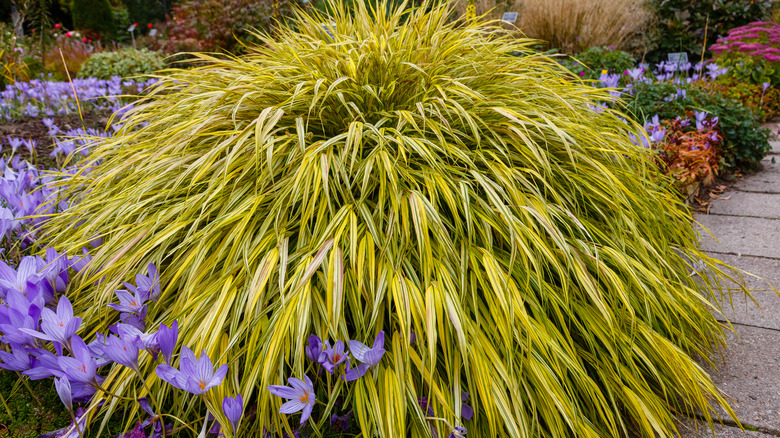The investment in beautiful, flowing Japanese forest grass (Hakonechloa macra) can be worthwhile for many landscapes. These are some of the best ornamental grasses for areas where you want to make a distinct statement with an easy-to-manage plant. They often add a dramatic, arching, even cascade-like display to the space with bright green to yellow coloring. If you notice that the grass is turning brown, that could indicate the plant is struggling with too much direct sunlight or too high temperatures.
Typically, the amount of sunlight these plants get determines their coloring. For example, if placed in dappled shade or even part shade conditions, the colors are likely to be bright yellow or light green. In some situations, they may even develop more of a golden hue. In cooler climates, full sunlight exposure will create more of a red tint to the leaves, though they will turn a lighter color brown just before the winter dormant period begins.
In direct sunlight and high heat, Japanese forest grass can become damaged and scorched. This is unhealthy for the plant and requires some intervention to save it from the temperature and light. The good news is that you can typically protect the plant and improve the overall coloring. If you live in an area that experiences really hot temperatures, protecting your ornamental grass from the intense heat can make a big difference.
How to treat browning on Japanese forest grass

If you have a variety of Japanese forest grass that’s vulnerable to sunlight and heat, it’s best to protect it by placing it in a shaded area under a tree or an area where there’s ample dappled shade. Consider moving the plant if it will be consistently exposed to direct sunlight for long periods. Consider planting a shade tree nearby if you don’t want to move the grass itself, or construct a garden awning that may offer a bit of protection from the intensity of the afternoon sun.
To handle the existing damage to the plant, take two steps. First, keep the plant wet and the soil moist through any period of significant heat. That will help keep the plant hydrated and fend off additional damage. You may also need to cut back the dead and damaged areas to encourage it to focus its energy on growth and development rather than repair. Like other ornamental grasses, these plants do well with good pruning, especially if they turn fully brown, which can occur in some climates around the start of fall. In this case, you can cut them back to as little as 2 inches in height if the plant is fully brown. This can be a normal part of their maintenance needs each year.



